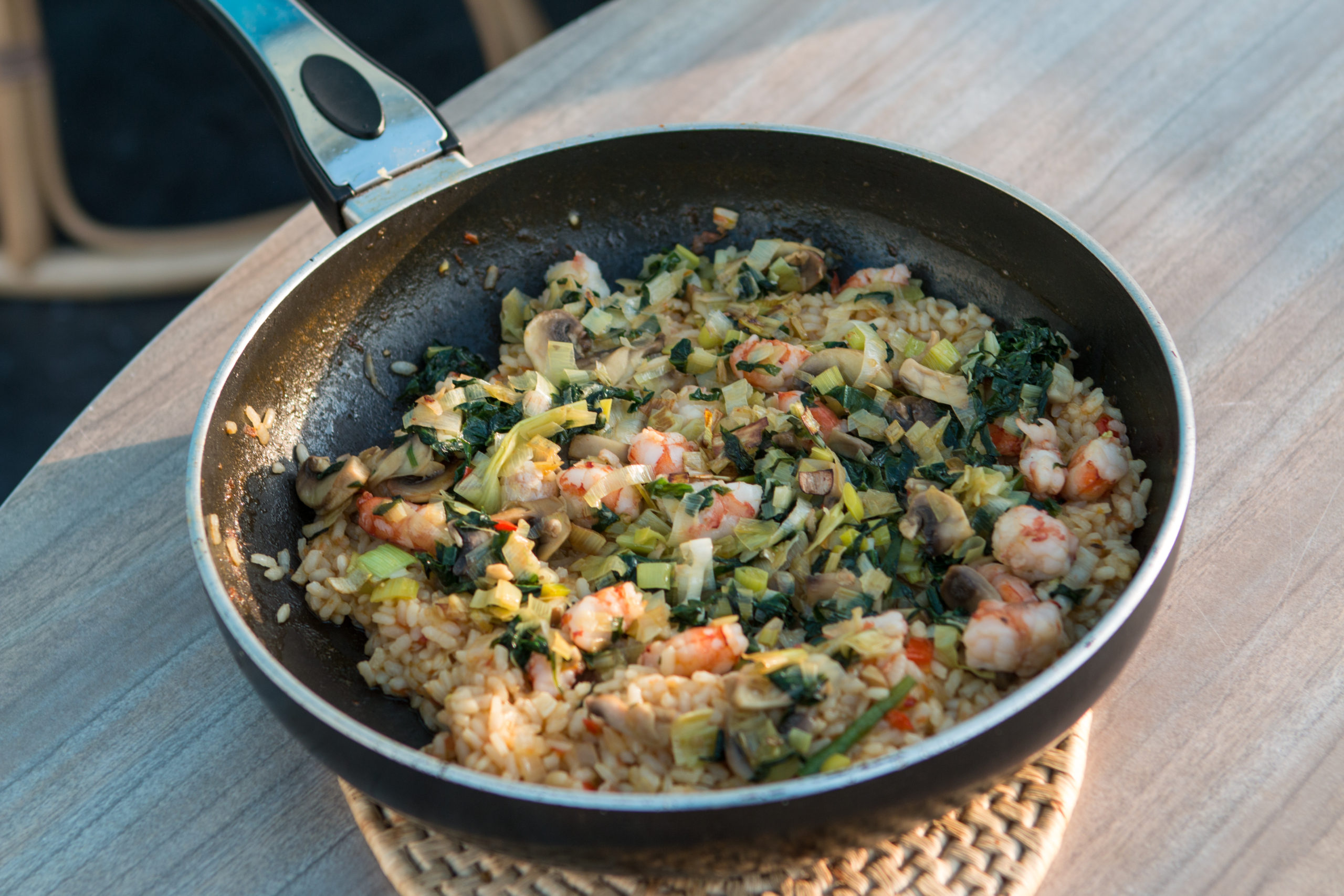Arroz con langostinos
This week I decided to go down the cooking route for my Spanish recipe. Having just stocked up on some fresh fish from a local visiting fishmonger, I was keen to combine my tiger prawns with some paella rice I had in the cupboard.
Cooking
The recipe combines garlic, onion and grated tomato in a pan with risotto rice and stock, before later topping with garlic scapes and prawns. The method was straight-forward enough and produced a dish I would happily revisit. Although the recipe was less than 200 words long, there were several translation points worth mentioning.
Translation
Arroz con langostinos
The original name for the recipe was “arroz con langostinos”. Firstly, “langostinos” is a false friend and does not actually mean langoustine, but prawn. I have always been a little confused by these types of crustaceans and decided to research and summarise some of them below.
| Spanish | English |
| Langostino | Prawn. Here: likely tiger prawn or king prawn |
| Gamba | Prawn |
| Camarón | Shrimp |
| Cigala | Norway lobster /langoustine/scampi |
To add to the confusion, I learnt here that langoustine or ‘cigala’ in Spanish, is actually part of the lobster family, rather than the prawn family.
So the title literally translates as rice with prawns, somewhat underwhelming for something so tasty. I would say that the prawns are the main even in this dish, rather than the rice. I explored the possibility of referring to it as a risotto, but since the stock is added all at once, rather than gradually, the cooking process is different. The prawns in the video appear to be larger than you average and are cut into three. Therefore king prawns appeared to be the most accurate description, so “King prawns with rice” it was.
Arroz caldoso and caldo
A “caldo” is a soup or a broth and “arroz caldoso” thereby refers to rice suitable for stock, which in this case means paella rice or risotto rice. “Caldo para paella”, stock for paella was requested. Caldo is available to buy in large cartons in Spain and that’s what the chef used. In the UK, the equivalent to be used in this dish would be a fish or chicken stock.
Cebolleta
Cebolleta can mean a few different varieties of the onion family such as spring onions or chives. However, here as revealed by the video, it is actually just a small onion.

16 ajos frescos
Ajo = garlic, fresco = fresh. Fresh garlic? Common sense prevailed so I did not use 16 cloves or bulbs of fresh garlic! I needed to delve deeper into the different types of garlic this could refer to. I noticed that in the video, the chef called them “ajos tiernos”, meaning garlic shoots or garlic scapes. That makes so much more sense! Except not to a British person. We don’t often see garlic shoots in the shops. In fact, I have no idea what one is! Our wild garlic season is very short and not readily available in many shops. I researched potential replacements and saw that wild garlic or diced garlic in smaller quantities is often used, so I decided to include a note saying that these could prove to be viable substitutes.
While we’re on the subject of garlic, a clove of garlic is called a “diente”, literally a “tooth”. Well they are white…
For such few ingredients, this really turned out to be a delicious dish, particularly due to the king prawns, which are a rare treat.
Next time it’s back to France for a viennoiserie recipe…



